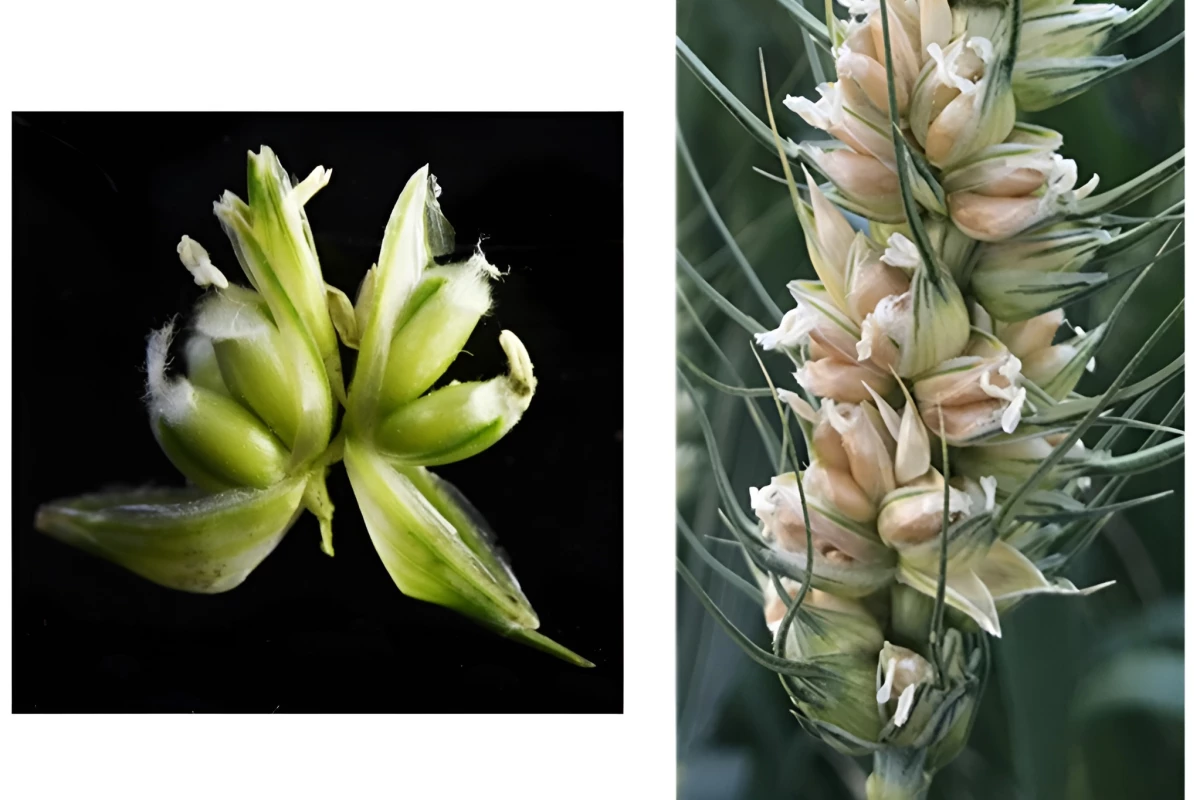Science
Genetic Breakthrough Could Triple Wheat Yields, Say Scientists

Researchers at the University of Maryland have made a significant advancement in agricultural science that could potentiality triple grain yields from wheat crops. This breakthrough stems from the discovery of a genetic mechanism that allows certain wheat plants to produce multiple grains from a single floret, a trait attributed to a mutant form known as multi-ovary wheat (MOV).
In typical wheat plants, each floret produces one grain. However, the MOV variant can produce up to three grains per floret. Until now, the genetic basis for this phenomenon was not well understood. The research team has identified a previously dormant gene called WUSCHEL-D1 (WUS-D1), which is activated in MOV wheat plants. This gene plays a crucial role in enhancing the development of female flower parts, including ovaries and pistils.
Unlocking Genetic Potential
By mapping the DNA of MOV wheat and comparing it with that of conventional bread wheat, the researchers pinpointed the differences that set the two apart. The activation of WUS-D1 in the MOV variant prompts a greater number of ovaries to develop, thus leading to an increase in grain production.
Assoc. Prof. Vijay Tiwari, a co-author of the study, emphasized the significance of this finding, stating, “Pinpointing the genetic basis of this trait offers a path for breeders to incorporate it into new wheat varieties, potentially increasing the number of grains per spike and overall yield.”
The team is optimistic that by employing gene editing technologies, they can enhance the yield of cultivated wheat plants further. The implications of this research are substantial, especially in the context of global food security.
Future of Wheat Production
The findings have been published in the Proceedings of the National Academy of Sciences, providing a detailed insight into the genetic mechanisms that govern grain yield in wheat. With the world facing increasing challenges related to food production, this research may offer a viable solution to boost crop yield sustainably.
As the agricultural sector seeks to meet the demands of a growing population, innovations like these could transform wheat cultivation practices, making it possible to achieve greater outputs using the same land, water, and fertilizer resources. The potential to triple yields from existing wheat crops could significantly impact food supply chains and contribute to addressing hunger in various regions.
The study marks an important step toward the future of agriculture, highlighting how genetic research can lead to practical applications that enhance food production capabilities worldwide.
-

 World5 days ago
World5 days agoExposing the Reality Behind Guatemala’s Garment Industry
-

 Politics5 days ago
Politics5 days agoLB Pharmaceuticals Quiet Period Ends October 21, Analysts Weigh In
-

 World5 days ago
World5 days agoHamas to Return Remains of Additional Hostage on Friday
-

 Business5 days ago
Business5 days agoRoyal Bank of Canada Upgrades Ovintiv to Outperform Rating
-

 Sports5 days ago
Sports5 days agoSaquon Barkley Reflects on James Franklin’s Dismissal from Penn State
-

 Entertainment5 days ago
Entertainment5 days agoSylvester Stallone’s ‘Alarum’ Surges in Streaming Despite Poor Reviews
-

 Health5 days ago
Health5 days agoFDA Announces First Nine Recipients of National Priority Vouchers
-

 Science5 days ago
Science5 days agoMIT Develops 3D Brain Models from Patient Cells for Custom Therapies
-

 Entertainment5 days ago
Entertainment5 days agoOlivia Nuzzi’s Memoir Set to Uncover RFK Jr.’s Controversial Texts
-

 Lifestyle3 days ago
Lifestyle3 days agoHistorian Seeks Help to Uncover Cherry Street’s Past
-

 Science3 days ago
Science3 days agoYale School of the Environment Launches Accelerated Master’s Programs
-

 Lifestyle5 days ago
Lifestyle5 days agoSouth Los Angeles Intersection Renamed to Honor Activist Danny Bakewell Sr.









